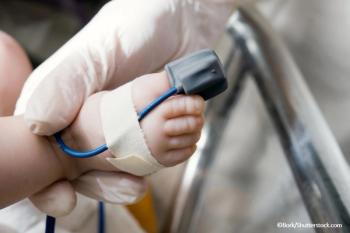
Tuberculosis Fingerprint Is Clue to Diagnosis
LONDON -- A pathway to early diagnosis of tuberculosis could be so-called proteomic fingerprinting of serum, a technique that employs mass spectroscopy to identify a pattern of proteins specific to the disease.
LONDON, Sept. 14 -- A technique that identifies a pattern of proteins specific to tuberculosis might be used to develop new diagnostic tests for the disease, researchers here say.
So-called proteomic fingerprinting of serum, using mass spectroscopy, is able to detect a pattern of circulating proteins that is more than 90% accurate in detecting TB, according to Dan Agranoff, MRCP, of St. George's Hospital.
And a subset of only four of those proteins is almost 80% accurate, Dr. Agranoff and colleagues reported in the Sept. 13 online issue of The Lancet.
The finding is a proof of the principle that a "diagnostic approach based on a proteomic signature can be applied to tuberculosis," the researchers said.
The diagnostic accuracy of the full proteomic signature compares favorably to sputum smear microscopy -- often the only available test in areas of high TB prevalence - which achieves a sensitivity of between 50 and 70%, the researchers said.
And the technique is also much faster than the highly accurate culture test for Mycobacterium tuberculosis, which is the diagnostic gold standard but can take up top six weeks to yield a result, they said.
But the full proteomic signature and the equipment needed to detect it is too expensive and complex for general use, Dr. Agranoff and colleagues said.
For that reason, the researchers said, they looked at four proteins that are part of the full proteomic signature of TB -- serum amyloid A, transthyretin, neopterin, and C-reactive protein - and showed that even the subset of proteins can have a diagnostic accuracy of up to 78%.
The advantage of using the smaller set of proteins, the researchers said, is that they can be identified using commercially available antibody tests but would more accurate than sputum smear microscopy and faster than culturing M. tuberculosis.
The researchers began by analyzing blood samples from TB in Uganda and The Gambia, obtained from a World Health Organization specimen bank, and samples obtained prospectively from patients with tuberculosis at St George's Hospital. They were compared with control samples from patients with other pulmonary diseases, as well as healthy volunteers.
Once the proteomic signature was obtained, the researchers validated it by looking at another prospective collection of TB patients and controls, Dr. Agranoff and colleagues reported.
In an accompanying commentary, Stuart Cordwell, Ph.D., of the University of Sydney in Australia, and colleagues, said that tuberculosis "is a disease in need of a rapid, sensitive, and specific diagnostic test." Such a test, Dr. Cordwell and colleagues wrote article, would have a "huge effect on the clinical outcomes of tuberculosis infection worldwide."
The study, they said, highlights that infections caused by one organism might have a serum proteomic profile that's different from that caused by another pathogen. Also, a disease such as TB -- in which early diagnosis and therapy is important - can be detected rapidly with this approach.
Newsletter
Enhance your clinical practice with the Patient Care newsletter, offering the latest evidence-based guidelines, diagnostic insights, and treatment strategies for primary care physicians.






















































































































































































































































































